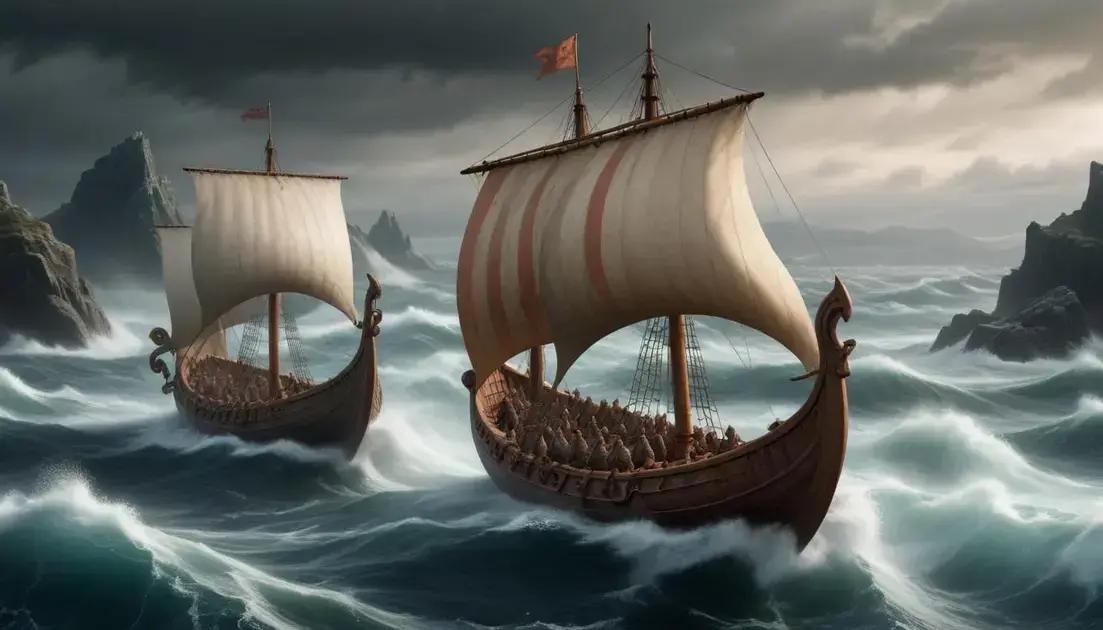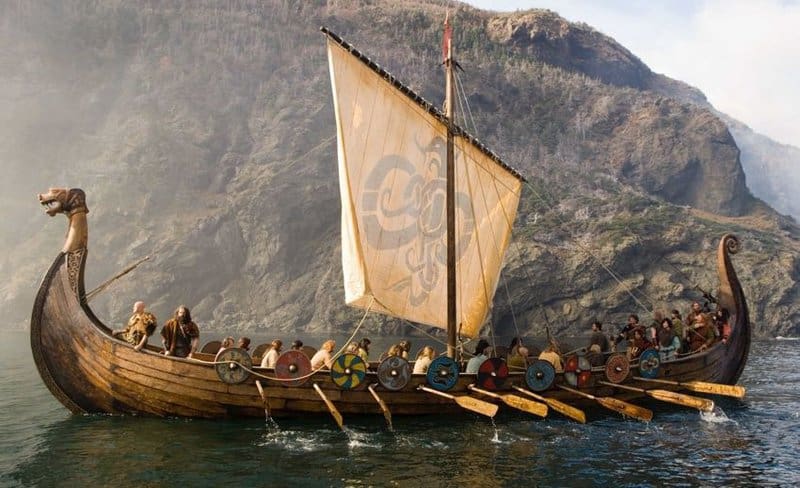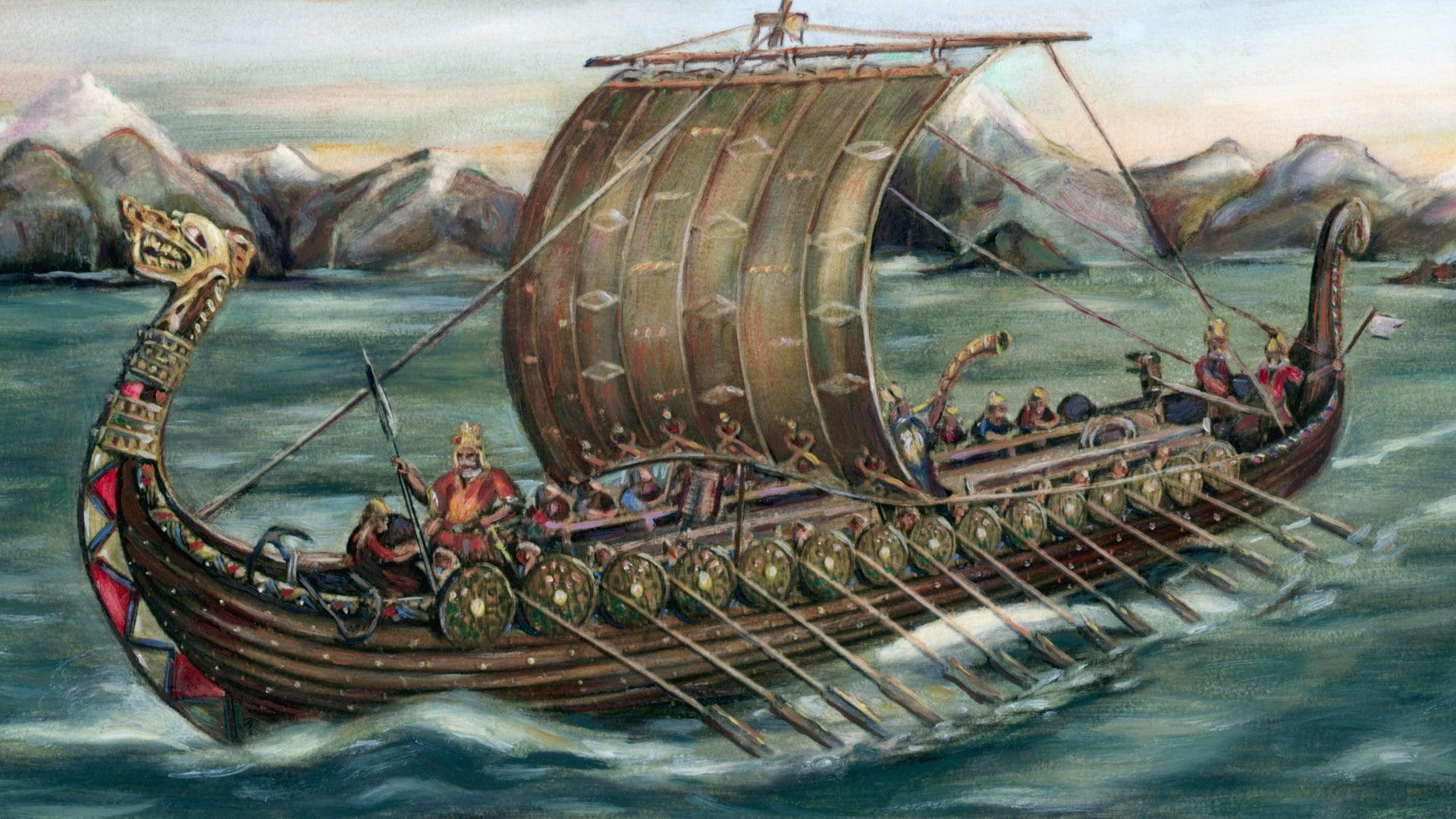
Vikings in America: Before Columbus
The Vikings were early explorers who reached North America around 1000 AD, long before Columbus. Their journeys, notably to areas like Newfoundland, led to cultural exchanges with Indigenous peoples and opened new trade routes. Historical evidence from archaeological sites reveals Viking settlements and artifacts, showcasing their impact on both European and Native cultures. Today, their legacy influences modern language, literature, and our understanding of exploration.
Did you know that Vikings reached America long before Columbus? Their incredible voyages opened up a whole new chapter in history that we are just beginning to understand. Let’s dive into their fascinating journey!
Norse Exploration
Norse exploration changed history in many ways. In the early 1000s, bold Vikings set sail for new lands. They traveled across the Atlantic Ocean using advanced ships. These ships were sturdy and fast, allowing them to navigate rough waters with ease.
Viking Ships
Viking ships, called longships, were designed for speed and agility. They had a shallow draft, meaning they could sail in both deep and shallow waters. This feature helped Vikings reach various shores and rivers. The ships had sails for wind power and oars for rowing. This made them effective for exploration and raids.
Famous Viking Explorers
One of the most famous explorers was Leif Erikson. He is known for reaching North America around the year 1000. He landed in a place called Vinland, believed to be part of modern-day Canada. This discovery happened almost 500 years before Columbus arrived!
Reasons for Exploration
Why did the Vikings explore? They sought new lands for farming and resources. They also pursued trade opportunities. Norse explorers opened new trade routes that connected their homeland with other parts of the world.
These explorations were crucial for sharing culture and goods. Viking journeys led to interactions with Indigenous peoples. This created exchanges of products and traditions between different cultures.
The Journey to America
The journey to America was a brave adventure for the Vikings. They traveled across the Atlantic Ocean, facing many challenges. The ocean could be rough and storms were common. Yet, these skilled sailors pressed on, driven by the desire for new lands and opportunities.
Preparing for the Journey
Before setting sail, Vikings made careful plans. They gathered supplies, including food and tools. These supplies were vital for survival on long voyages. They also chose sturdy ships designed for the open sea. This preparation was key to their success.
Navigating the Seas
Navigating was not easy. Vikings used the sun and stars to find their way. They even relied on birds and ocean currents. Each factor helped them stay on course. Their knowledge of the sea was impressive and crucial for reaching new lands.
Life on Board
Life on a Viking ship was packed and lively. Sailors shared close quarters and had daily tasks. Some would steer the ship, while others managed the sails. Eating simple meals and sharing stories helped keep morale high during the long journey.
The journey to America was long and filled with excitement. Vikings were not just explorers; they were also seekers of adventure. Their voyages led to incredible discoveries that shaped history.
Impact on Native Cultures
The arrival of Vikings had a big impact on Native cultures. When they reached America, they encountered different groups of Indigenous peoples. These meetings led to exchanges of goods, ideas, and traditions.
Cultural Exchanges
Vikings brought new tools and materials. They introduced iron and other resources that were not available before. Native peoples learned about these new items and often adopted some of them into their lives.
Trade Relationships
Trade between Vikings and Indigenous peoples developed over time. Vikings traded furs, fish, and other goods with Native Americans. This helped both cultures gain access to valuable resources. The exchanges were mutually beneficial and fostered new relationships.
Effects on Social Structures
The meetings also changed social structures. Vikings interacted with local tribes, which sometimes led to alliances. However, in some places, conflicts arose over land and resources. These challenges affected the future of both cultures.
Despite the differences, these interactions were significant. They shaped the history of North America as we know it today. The legacies of these exchanges continue to influence cultures.
Historical Evidence
Historical evidence shows us that Vikings were in North America. Archaeological finds reveal their presence in places like Newfoundland, Canada. These discoveries include remnants of Viking longhouses and tools.
Key Archaeological Sites
One important site is L’Anse aux Meadows. This location had evidence of Norse settlements. It proves that Vikings built structures and lived there for some time. Artifacts like nails, pottery, and iron tools were found.
Written Records
In addition to artifacts, written records support Viking exploration. The Icelandic sagas tell stories of voyages to new lands. These tales describe encounters with Native peoples and their own adventures.
Research and Discoveries
Ongoing research continues to shed light on Viking history. Scholars study these findings to better understand their travels and interactions. Each discovery adds to our knowledge of this fascinating period.
These pieces of evidence highlight how Vikings impacted the Americas. They traveled further than many once believed, leaving a lasting mark on history.
Legacy of the Vikings
The legacy of the Vikings is still felt today. Their exploration opened new lands and pathways for trade. This adventurous spirit set the stage for future explorers.
Cultural Influences
Viking culture has influenced art, language, and traditions. Many words in English come from Old Norse, the Viking language. Their myths and legends continue to inspire books, movies, and games.
Impact on Exploration
Vikings showed that travel and exploration were possible. They inspired later explorers to seek new horizons. This urge to explore has shaped our world and maps.
Historical Significance
Understanding the Vikings helps us learn about history. They were not just raiders; they were traders and settlers too. Their impact on Europe and North America is essential to know.
Today, we celebrate their contributions through festivals and reenactments. The Viking spirit lives on in many ways, reminding us of our shared past.
Conclusion
In conclusion, the impact of the Vikings on history is vast and varied. Their journeys opened up new lands, cultures, and trade routes. From early settlements in North America to lasting influences in language and literature, their legacy continues today.
Understanding the Vikings helps us appreciate their role in shaping our world. They were not just explorers but also traders and cultural influencers. As we explore their history, we see how their adventurous spirit inspires us even now.
By learning about the past, we gain insights for the future. The story of the Vikings teaches us about exploration, adaptation, and the connections between cultures. Their legacy reminds us that history is full of exciting possibilities.


